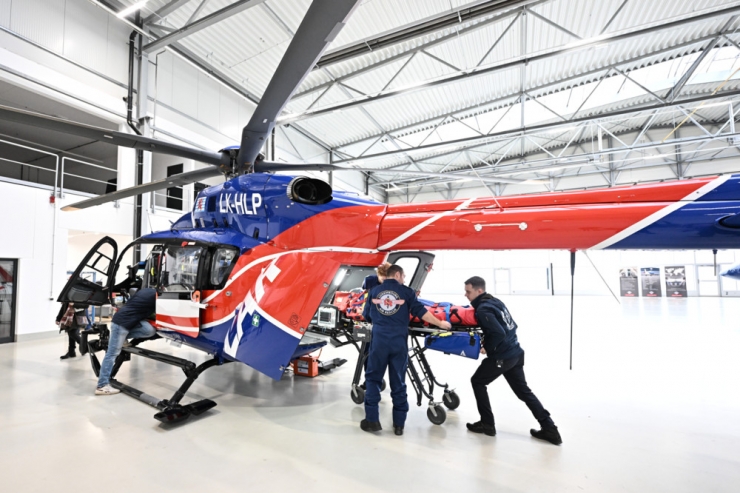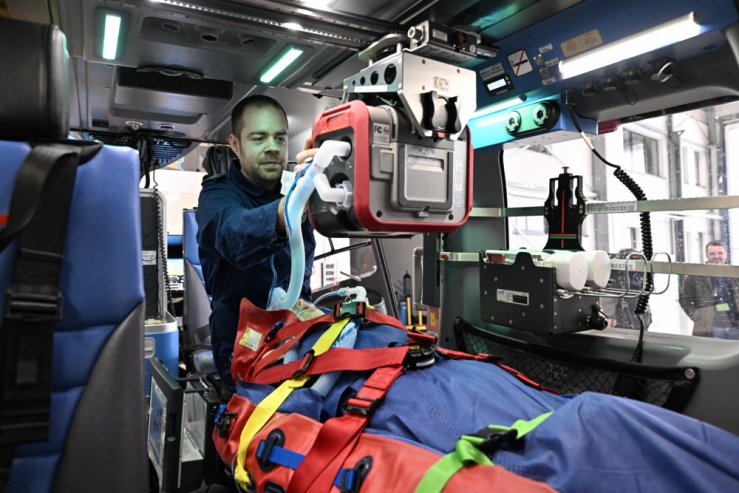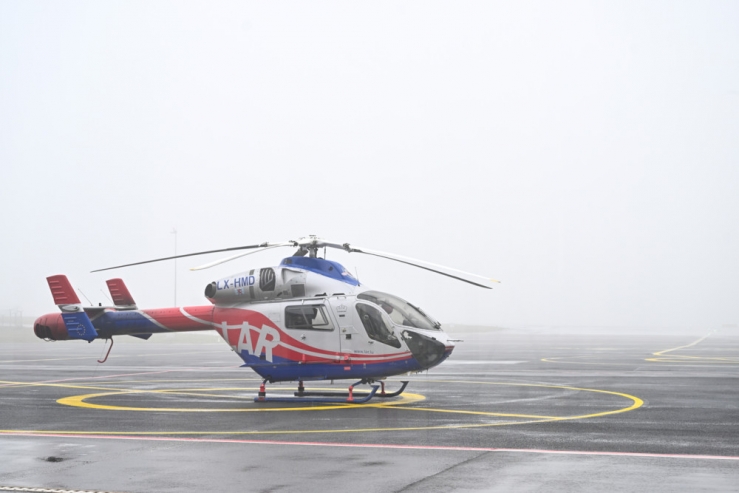Founded in 1988, Air Rescue is flying into the future with two latest generation Airbus helicopters. The new aircraft of the Luxembourg Air Rescue Service was officially presented on Friday.
Newly painted in rich red, white and blue, the two new LAR (Luxembourg Air Rescue) rescue aircraft are housed in the hangar at Findel.
Airbus H145 D3, that’s the correct name. For René Closter, they represent a milestone in the history of the Luxembourg air rescue service. The president of LAR would not be honest with himself if he did not point out that high-tech aircraft are also not an expression of the will that led to the founding of LAR 35 years ago. Against resistance from politics, authorities and the medical profession.
Today LAR is a full part of the Luxembourg rescue system. Thanks to the new helicopters, they are perfectly prepared for the future, says LAR Director Frank Halms.
Renewal is inevitable
The main reason Air Rescue chose the Airbus model is that the older helicopters that have been in service since the mid-1990s are no longer manufactured. Spare parts are not only scarce, but above all have become incredibly expensive. This made the renewal of the fleet inevitable. Apart from this, the new machines, which are some of the latest currently used in air rescue, will offer a number of advantages.
They are fast, around 280 km/h, which can be crucial to life. Especially when it comes to getting a doctor or medical help for a patient. It’s comfortable, and thanks to the latest five-blade rotor technology, vibration is extremely low. In addition, the cabin is not only flexible to use, but also very spacious and practical. This makes it possible, for example, to transport an injured person without changing his position, thanks to the mobile stretcher with foldable legs. There is now enough space for the patient to receive optimal care by medical staff or other companions during the flight. Of course, helicopters are very safe as well. They can take off, fly and land even in the most difficult weather conditions, such as fog. Like a dragonfly, at complete rest in the air, they allow the patient to release themselves from the awkward position using a cable winch. They can also be used for training purposes, which makes sense because the French, Germans and Swiss provide rescue services with the same type of helicopter.
But the Airbus helicopter also has two significant drawbacks, adds Rene Kloster. On the one hand, as I said, expensive and on the other hand, great. The latter can come into play, for example, when space for take-off and landing is limited during operations. You will have to live with that, especially since the older helicopters will be retired and other types of helicopters will not meet the high safety requirements of the LAR.
190 employees
With the two new aircraft, LAR’s fleet now consists of six helicopters and four ambulance aircraft. If one of the four older helicopters needs to be replaced in the future, an Airbus H145 D3 will replace it. There are currently 190 men and women working at Air Rescue. Not everyone is a pilot, but everyone works in their own way to ensure the quality of emergency aid and patient care in Luxembourg, says René Kloster.
Director Frank Halms confirms in an interview: “We save everyone, whether they are members or not. But if we no longer have any members or supporters, we will no longer be able to save anyone.

“Certified tv guru. Reader. Professional writer. Avid introvert. Extreme pop culture buff.”









More Stories
Samsung Quantum Dot TV: Art meets technology
Pitch: €56m for energy startup Reverion
Plastoplan: Plastics for Energy Transition